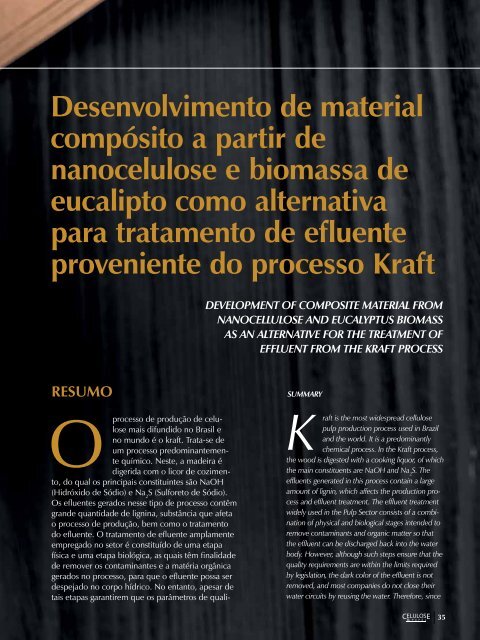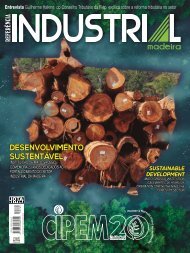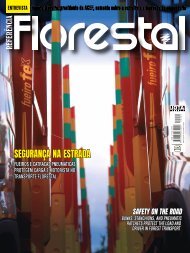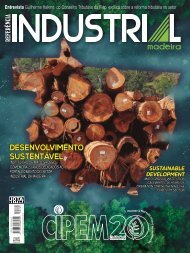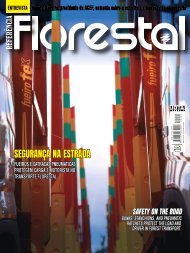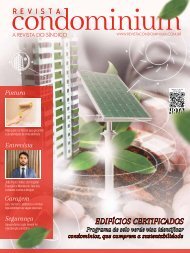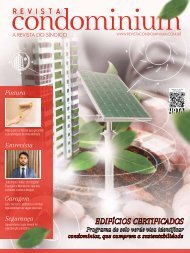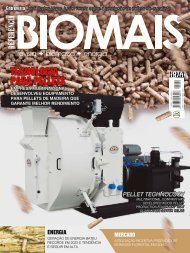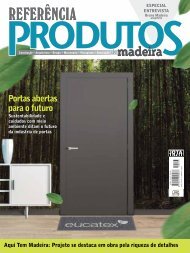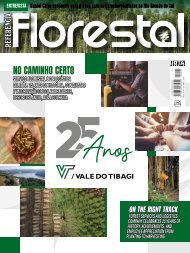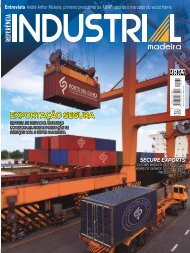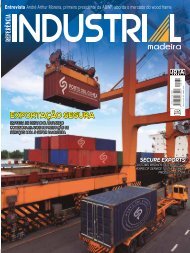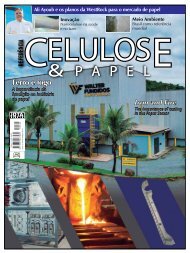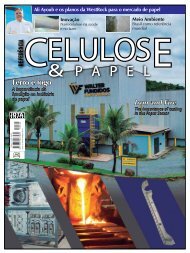You also want an ePaper? Increase the reach of your titles
YUMPU automatically turns print PDFs into web optimized ePapers that Google loves.
Desenvolvimento de material<br />
compósito a partir de<br />
nanocelulose e biomassa de<br />
eucalipto como alternativa<br />
para tratamento de efluente<br />
proveniente do processo Kraft<br />
DEVELOPMENT OF COMPOSITE MATERIAL FROM<br />
NANOCELLULOSE AND EUCALYPTUS BIOMASS<br />
AS AN ALTERNATIVE FOR THE TREATMENT OF<br />
EFFLUENT FROM THE KRAFT PROCESS<br />
RESUMO<br />
Oprocesso de produção de celulose<br />
mais difundido no Brasil e<br />
no mundo é o kraft. Trata-se de<br />
um processo predominantemente<br />
químico. Neste, a madeira é<br />
digerida com o licor de cozimento,<br />
do qual os principais constituintes são NaOH<br />
(Hidróxido de Sódio) e Na 2<br />
S (Sulforeto de Sódio).<br />
Os efluentes gerados nesse tipo de processo contêm<br />
grande quantidade de lignina, substância que afeta<br />
o processo de produção, bem como o tratamento<br />
do efluente. O tratamento de efluente amplamente<br />
empregado no setor é constituído de uma etapa<br />
física e uma etapa biológica, as quais têm finalidade<br />
de remover os contaminantes e a matéria orgânica<br />
gerados no processo, para que o efluente possa ser<br />
despejado no corpo hídrico. No entanto, apesar de<br />
tais etapas garantirem que os parâmetros de quali-<br />
SUMMARY<br />
K<br />
raft is the most widespread cellulose<br />
pulp production process used in Brazil<br />
and the world. It is a predominantly<br />
chemical process. In the Kraft process,<br />
the wood is digested with a cooking liquor, of which<br />
the main constituents are NaOH and Na 2<br />
S. The<br />
effluents generated in this process contain a large<br />
amount of lignin, which affects the production process<br />
and effluent treatment. The effluent treatment<br />
widely used in the Pulp Sector consists of a combination<br />
of physical and biological stages intended to<br />
remove contaminants and organic matter so that<br />
the effluent can be discharged back into the water<br />
body. However, although such steps ensure that the<br />
quality requirements are within the limits required<br />
by legislation, the dark color of the effluent is not<br />
removed, and most companies do not close their<br />
water circuits by reusing the water. Therefore, since<br />
35


